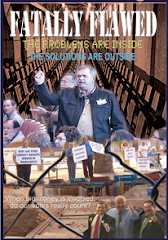
Eve Pell on America’s Culture of Punishment
Posted on Apr 24, 2009
By Eve Pell
When I was involved in prison reform in the early 1970s, my colleagues and I were shocked that our state, California, held so many prisoners, 22,000. Now, 35 years later, California’s prison population has ballooned to 165,000. Since 1973, the U.S. imprisonment rate has multiplied more than five times; we hold the dubious distinction of being the most imprisoning nation in the world.
Why does our nation, with 5 percent of the world’s people, have 25 percent of its prisoners, about 2 million? Why do we keep at least 25,000, maybe double that, in long-term isolation, a situation known to cause insanity, when other nations have more effective and humane methods of managing violence? Why do we inflict intense physical pain, sometimes to the point of death, with tasers, stun belts and restraint chairs at a time when violent crime is not on the increase?
Anne-Marie Cusac, an award-winning reporter (and published poet) with years of covering criminal justice issues, tackles these questions in her book “Cruel and Unusual: The Culture of Punishment in America.” In just-the-facts, dispassionate style, she traces the methods our society has used to discipline offenders and nonconformists, from 17th century floggings and stocks in the public square to 21st century super-maxes designed to deprive inmates of human contact. She chronicles the motivations driving such vengeful practices, from Protestant Christian beliefs in the devil and the sinful nature of man to public fear of crime whipped up by television cop shows and exploited by politicians.
Cusac, who teaches communications at Roosevelt University in Chicago, also traces the history of American attitudes toward punishment from colonial days and the Rev. Jonathan Edwards in 1740 to modern-day Christian conservatives and the tortures at Abu Ghraib. (“All are by nature the children of wrath and heirs of hell … ,” preached Edwards, insisting that the wills of young “vipers” must be beaten down and broken.) Using a wide lens, she examines the intentional infliction of pain as a means to discipline and reform those who are deemed in need of chastisement, from lashings with cat-o’-nine-tails and boring holes in tongues with a hot iron, as was done in the Massachusetts colony, to hooding and beating inmates, or shackling them to restraint poles in freezing cold or searing heat, as happened recently in some U. S. prisons. The same philosophy extends to families: I was astonished to find that one can order spanking rods—a Speak Softly Spanking Stick, for instance—on the Internet, for administering biblically sanctioned punishment to one’s child.
Cusac links changes in attitudes toward punishment to changes in American culture. After the American Revolution, for example, the former colonists mitigated the harsh penalties imposed under monarchical rule, finding lesser punishments more in line with their new democracy. She describes the evolution of reformist and anti-reformist movements as they swept across the nation and conflicted with one another.
Click on this link: Truthdig for the rest of the story.
















